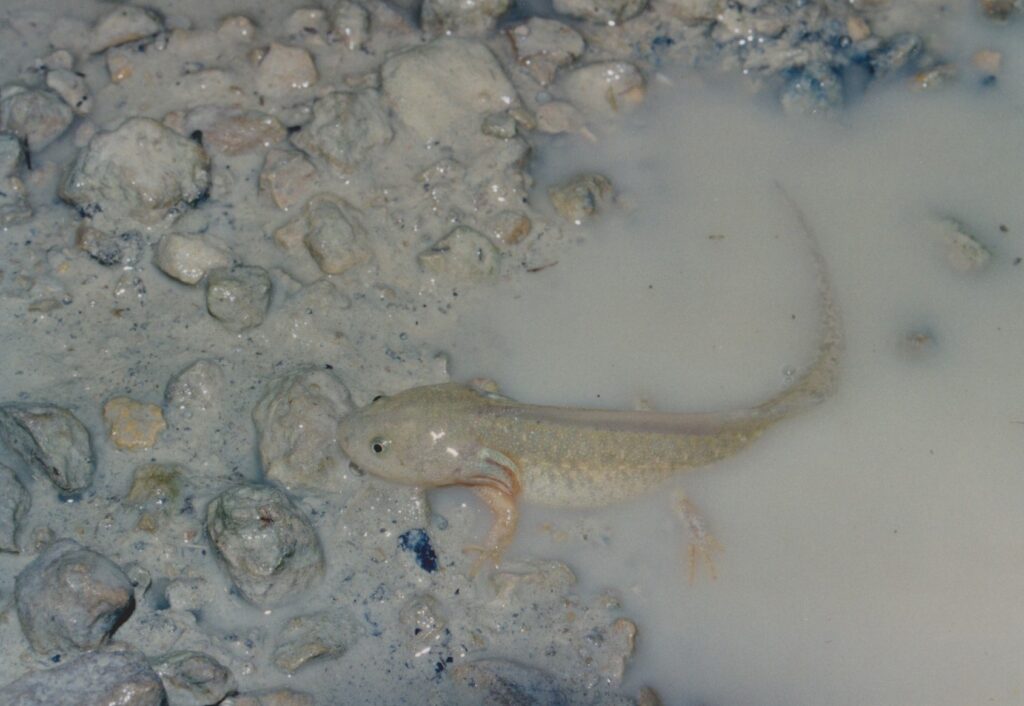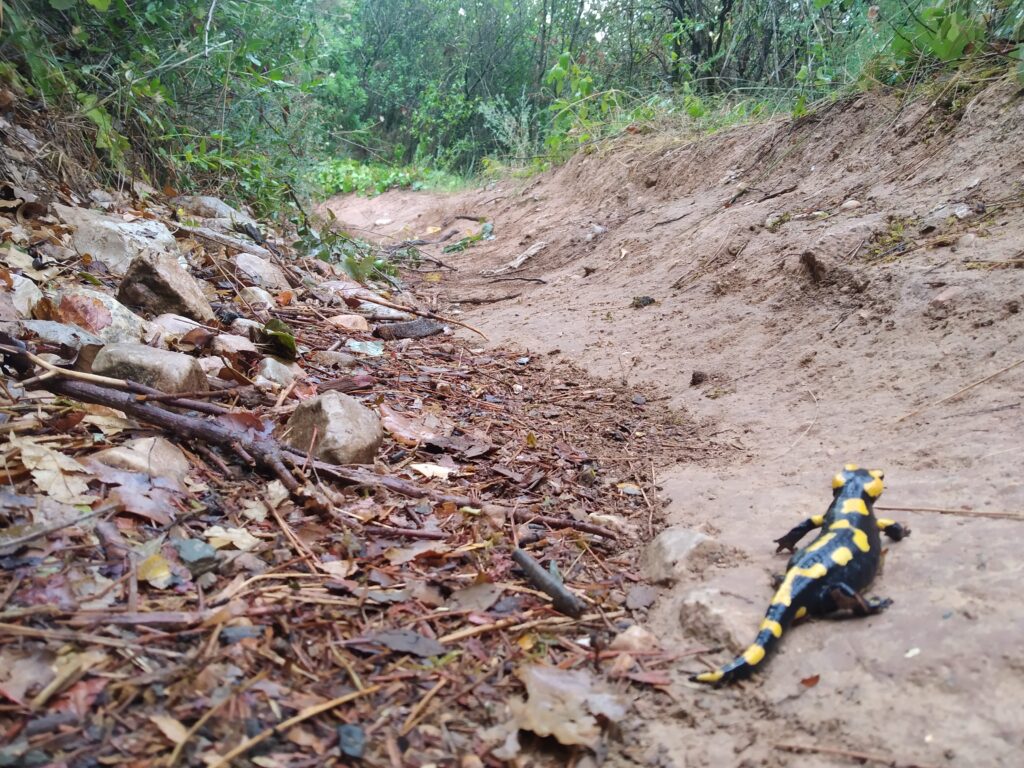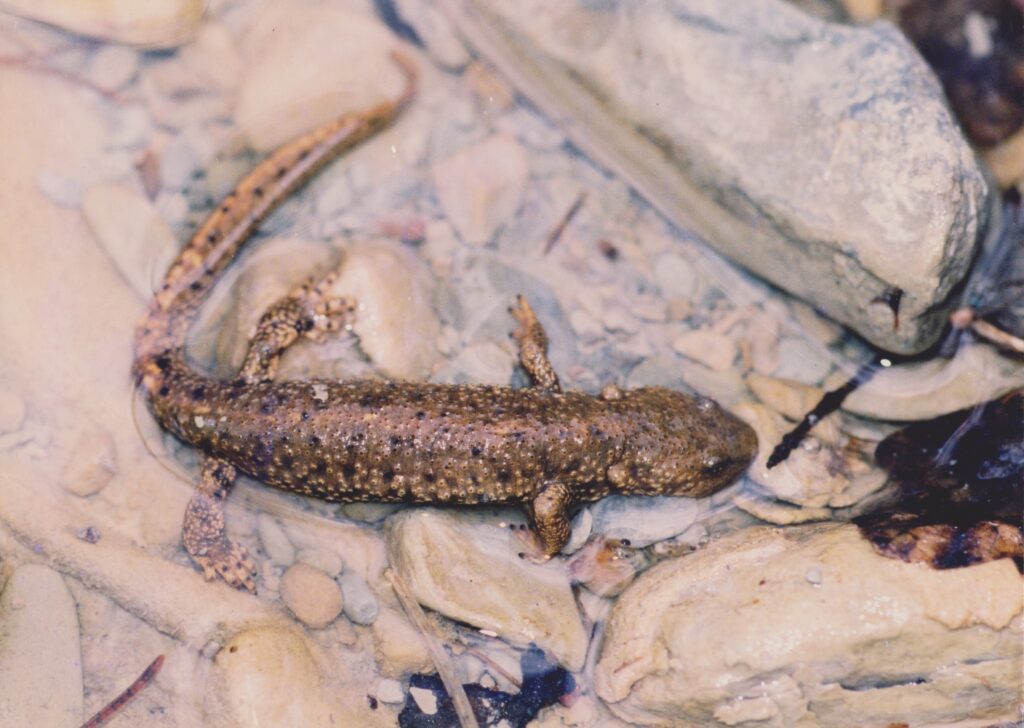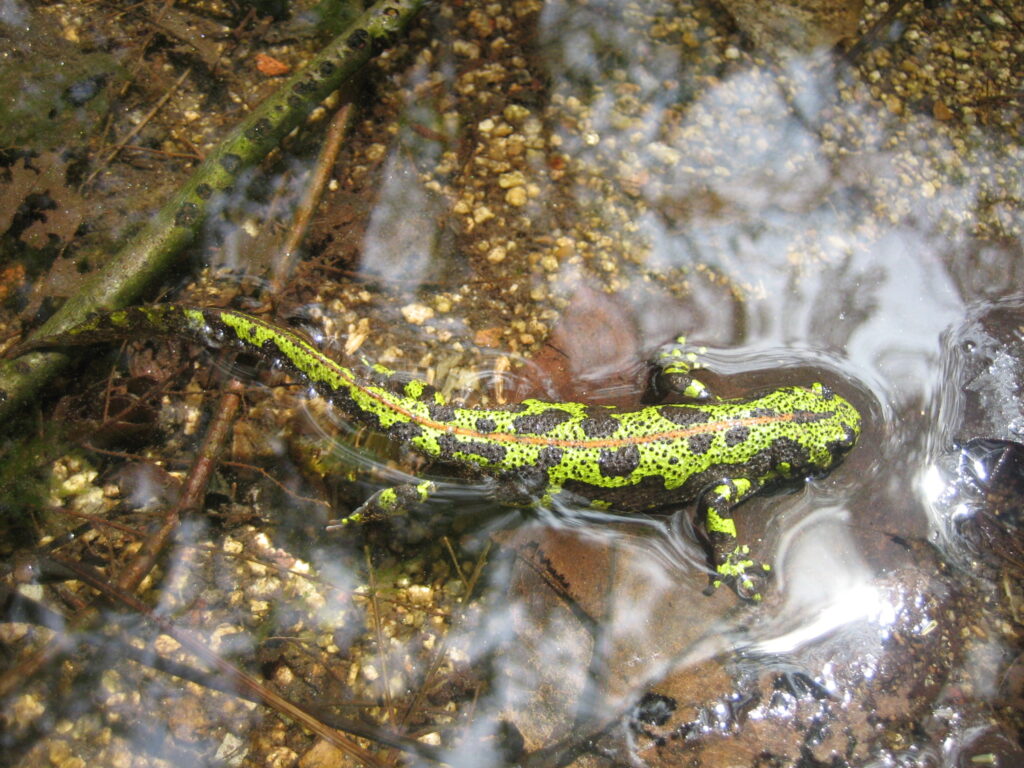Salamanders and newts, between land and water

Since time immemorial, on rainy nights, salamanders have roamed the Iberian forests. In the cold, fast-flowing waters of the Pyrenean torrents, a species of newt moves along the bottom in search of prey. In the troughs, springs or pools of our fields, the marbled newts perform their nuptial dances. But what role do these amphibians play in our ecosystems? How many species do we find in our mountains and what does their conservation depend on?
Similarities and differences among these amphibians
In the Iberian Peninsula we have two species of salamandersThey are terrestrial and nocturnal. They only come to water to lay their eggs or larvae, as the young develop in this environment. In contrast, the nine species of newts are more dependent on water and spend a large part of their life cycle in this environment.
These tailed amphibians breathe atmospheric oxygen dissolved in the water, through their gills (the larval forms) and through their lungs, through buccopharyngeal respiration or through their skin, the adults.

The courtship of salamanders and newts varies according to the species. The courtship of some newts is by wedding danceswhich the male performs to attract receptive females. Other newts of riverine habitats perform a mating by intertwining their tails. Males do not have a penis and release a mass of sperm, called the spermatophore through the cloaca (orifice where the digestive, reproductive and excretory apparatus meet). The female passes over it and introduces it into her cloaca, where it fertilises the eggs. All Iberian species, except the common salamander, lay eggs which they deposit in the water. From here they will hatch aquatic larvae which, when they reach the optimum size, will reabsorb their gills and grow into adults.
The feeding larvae are basically carnivorous, they are great controllers of aquatic insect populations, including mosquitoes. Adults feed on insects, worms, slugs, snails, etc., and are a key part of the ecosystem, controlling the populations of their prey.
Where can we find them?
In the oak, beech and holm oak forests... after rain or at night, we can see the common salamander. This amphibian, with black and yellow/reddish/orange colouration, combined with great variability in the nine Iberian subspeciesuses its "image" as a warning of its toxicity. This phenomenon, in biology, is known as the aposematism. These animals come out when the environmental conditions allow them to do so, to feed or to deposit their larvae (they give birth already formed, as the eggs hatch inside the females) in fountains, streams, troughs...

The other salamander species, the rabilargaIt also roams the Atlantic forests of Asturias, Galicia and northern Portugal. Linked to river courses, it tends to move little and, as its name suggests, the tail is usually one or two times the length of the body.
Distributed throughout the Pyrenees mountain range, we find the Pyrenean newt. Brownish or greyish in colour, with an orange or reddish belly. It lives in cold water streams, stony and devoid of vegetation, backwater areas, lakes, thermal waters... It feeds on aquatic insects, salamander larvae and tadpoles. Reproduction is very peculiar and involves a "coiling" of the tails for the introduction of the spermatophore.

In 2005, science named the southernmost isolated population of the Pyrenean newt as a new species. Currently, the Montseny newt would consist of around 2,000 specimens, distributed in two populations in this Catalan mountain.
Linked to permanent ponds, water troughs, cisterns, irrigation ditches, reservoirs, springs, watercourses, etc., we find gallipatos, marbled newts, pygmies, iberian products, webbed, alpine and a new species of Portuguese newt. The gallipato is the largest Iberian newt, distributed over a large part of the peninsula, and has a curious defensive strategy. It is capable of pressing its lateral toxic glands with its ribs until they protrude from its skin. In this way they make it difficult for a potential predator to swallow them. The name in Catalan, "ofegabous"(drowns oxen), referring to the popular belief of possible drowning of cattle when they go to drink water and accidentally ingest this newt. The alpine newt, distributed throughout Europe, it has a population on the Cantabrian slope and another in Guadarrama (Madrid). The male is characterised by membranes called "crests" which develop during the breeding period and are used for their "nuptial dances". The same characteristic is found in the marbled newtblack and green in colour. In the north of the peninsula we find the webbed newtThe name comes from the membranes that the males have on their hind legs during the mating season. In the centre and south-west of the Iberian Peninsula, we find the pygmy newtas its name suggests, is small in size. And all we are missing is the Iberian newtendemic to the west of the Iberian Peninsula, and the recent species discovered in Portuguese territory.

How important are these amphibians in the ecosystem?
In natural ecosystems, feeding structures are formed between predators and prey, called food webs. For the ecosystem to function, there has to be a balance between all its parts, and this is where salamanders and newts come in.
They do this by controlling prey populations: aquatic insects, invertebrates such as leeches or other worms, or their own larvae or those of other amphibians, such as toads or frogs. On the other hand, they are also prey for other animals. That is why they have developed strategies such as mimicry, aposematism, toxins or the curious defence of the gallipato. But they are of no use to otters, foxes or wild boars, which have learned to "peel" these amphibians and eat the soft parts. Or against water snakes, wading birds or nocturnal birds of prey that have developed resistance to their toxins.
What are the problems faced by their populations?
These animals, due to their dependence on water, the characteristics of their skin, their limited mobility, etc., are very sensitive to environmental changes. Let's list some of them:
- Habitat loss: abandonment of fields and ponds, clogging of aquatic environments by runes or rubbish, replacement of traditional ponds by others that are inaccessible and without shelters, lack of rainfall...

- Road infrastructureroadkill and habitat fragmentation, isolating populations and increasing the inbreeding (genetic impoverishment that can lead to extinction).
- Invasive speciesintroduced fish such as the gambusia or the American crayfishwhich prey on their larvae
- Diseasescaused by fungi such as chytridiomycosis or others of viral origin
- Chemical contamination of the habitatchemicals used in agriculture or industry that kill vegetation, insects or cause them to suffer from disease
- Loss of the ozone layer: increased ultraviolet radiation causes malformations and genetic damage to them
All that remains is to raise awareness about the role of these curious animals, educate future generations and try to put corrective measures to the different environmental problems we have.
Don't miss any adventure in the Pyrenees!

